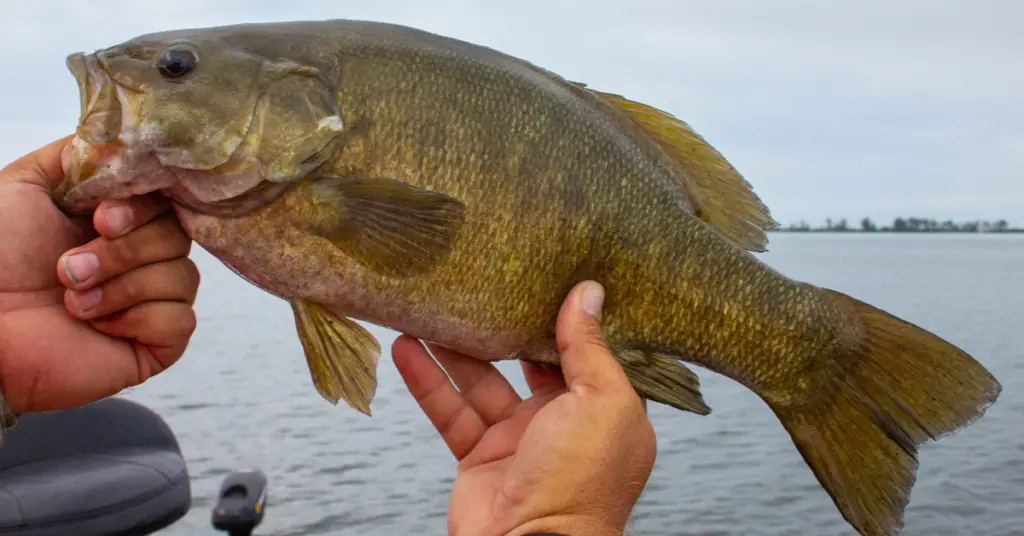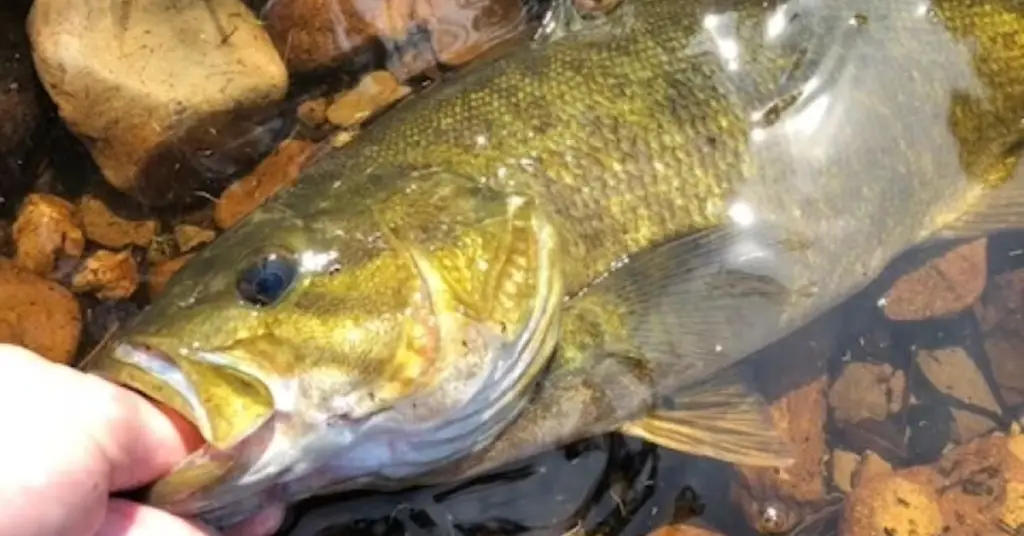Roughly a year after the Fisheries Department of Nova Scotia utilized chemical treatment to eliminate invasive smallmouth bass from a lake, early indications of success are emerging.
In September of last year, around 1,500 liters of a solution containing the pesticide rotenone were introduced into Dobsons Lake, near Canso, N.S. Rotenone, a pesticide employed since the 1950s, targets the gills of fish, impeding their ability to breathe, yet it has no adverse effects on birds and mammals. Nevertheless, this pesticide leads to the demise of all fish within the treated area.
The primary objective of this undertaking was to eliminate invasive smallmouth bass from the 52-hectare lake in eastern Nova Scotia. This effort aimed to safeguard the native brook trout population in the rivers of the adjacent Cole Harbour watershed.
Andrew Lowles, overseeing resource management in the department’s inland fisheries division, reported that brook trout have subsequently been observed migrating upstream naturally, while no traces of smallmouth bass have been detected within the lake.
“It’s still early to call Dobson Lake a total success, but at this point we have no indication that smallmouth bass were not eradicated,” said Lowles.
He mentioned that the department conducted the observations in the previous autumn and during the recent spring and intends to conduct a follow-up assessment in September.

Efforts to remove smallmouth bass using a pesticide at Dobsons Lake have shown early signs of success.
Species Illegally Transferred Into the Lake
Before utilizing the pesticide, the department took out brook trout and minnows from the lake. Presently, the department is also endeavoring to restore the fish population in the watershed area by introducing fish from another lake within the same system, as stated by Lowles.
The escalating issue concerning smallmouth bass was initially recognized in the spring of 2020, following reports received by the department indicating the unauthorized transfer of the species into the lake.
The application of rotenone in Dobsons Lake came after a similarly successful elimination of fish at Piper Lake in Pictou County, which occurred in October 2020.
In the case of Piper Lake, which is significantly smaller than Dobsons at five hectares, Lowles mentioned that approximately 500 smallmouth bass were physically extracted from the shallow waters. This was achieved through the utilization of rotenone, as well as by utilizing nets and electro-fishing, a method that involves using a rod or specialized boat to deliver a an electric shock that stuns the fish.
However, due to its larger size with more bays and deeper waters, the physical removal of deceased fish from Dobsons Lake was deemed impractical, according to Lowles.
“We left many of those [dead] fish to return their nutrients back into the system,” he said. “We really don’t have a good estimate of bass from Dobsons.”
Rotenone Can Affect Frogs and Salamanders
Although rotenone does not harm mammals or birds, it can have an impact on amphibious invertebrates like frogs and salamanders during their early life stages when they rely on gills for breathing.
Lowles mentioned that certain frogs have been spotted along the edge of Dobsons Lake. Additionally, at Piper Lake, where only two species were previously seen, four species of frogs are now observed. Moreover, aquatic organisms like zooplankton have experienced a resurgence in the smaller lake, as per his observations.
“Everything that was there (at Piper) pre-treatment was back within a year post treatment”
Several sport fishing and ecological groups in Nova Scotia have predominantly endorsed the use of the chemical as a final option to safeguard ecosystems at risk due to invasive fish species.
Scott Beaver, a member of the St. Mary’s River Association, expressed that, at least in the context of Piper Lake, the province made the correct decision and responded promptly to safeguard the salmon population within the St. Mary’s River system.
“We are happy with the results there, but I don’t necessarily think that it’s an application you would use in every situation,” Beaver said in an interview.
“Maybe in some cases an invasive species may have gotten too far out of control. You couldn’t do the entire river system for instance, at some point you almost have to accept the fact that they are there.”
Measure ‘Less Than Ideal’
Raymond Plourde, the senior wilderness co-ordinator at the Ecology Action Centre in Halifax, has previously endorsed employing the pesticide in the two Nova Scotia lakes, while also labeling the approach as “suboptimal.”
However, Plourde emphasized that the risk to indigenous species, including salmon and brook trout, is indeed genuine due to the proliferation of warm-water invasive species like smallmouth bass and chain pickerel. This proliferation is a consequence of climate change.
“Invasives are one of the leading causes of biodiversity decline in native species and they are essentially being spread by people from one watershed to another,” he said. “It is a very serious thing and desperate times call for desperate measures.”
Lowles stated that there are currently no intentions to apply the chemical in other locations; however, he did not dismiss the possibility of using it again in the future.
“If we could prevent the spread through education and legislation it’s the most effective thing,” he said, while adding that “we would prefer not to have to use rotenone.”
“You can use nets and mechanical removals for containment and to suppress populations for the short term, but rotenone is likely the only method for total eradication.”






2 Responses
Consider a fishing derby for smallmouth bass in these lakes. A family fun weekend, no licenses required, prizes for biggest & most caught. Monitored by DOF & MNR supervision. Donate all fish to a foodbank. Any species other than Smallmouth caught to be released. Our waterways need less chemical interference…not more. Say no…to Rotenone. Too many species at risk.
I will make this short and to the point. The attempt to erradicate Smallmouth Bass from Dobson’s Lake near Canso Nova Scotis is total insanity. Someone needs their head examined. It is far better to allow Mother Nature to handle any instability.
In my honest opinion, I do not see a problem.